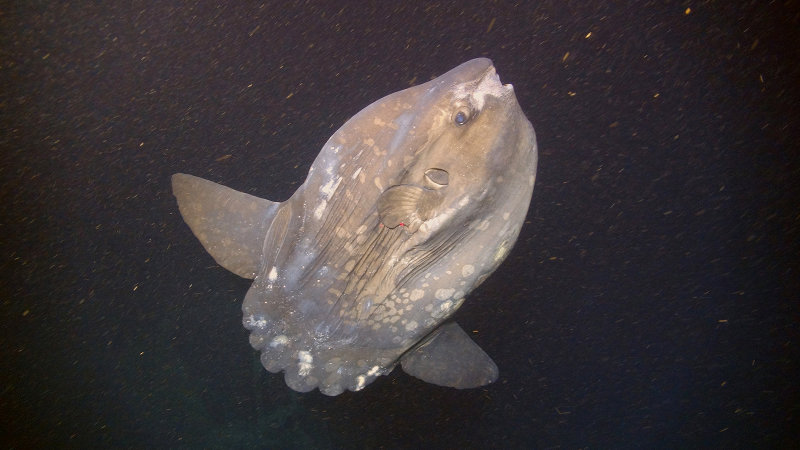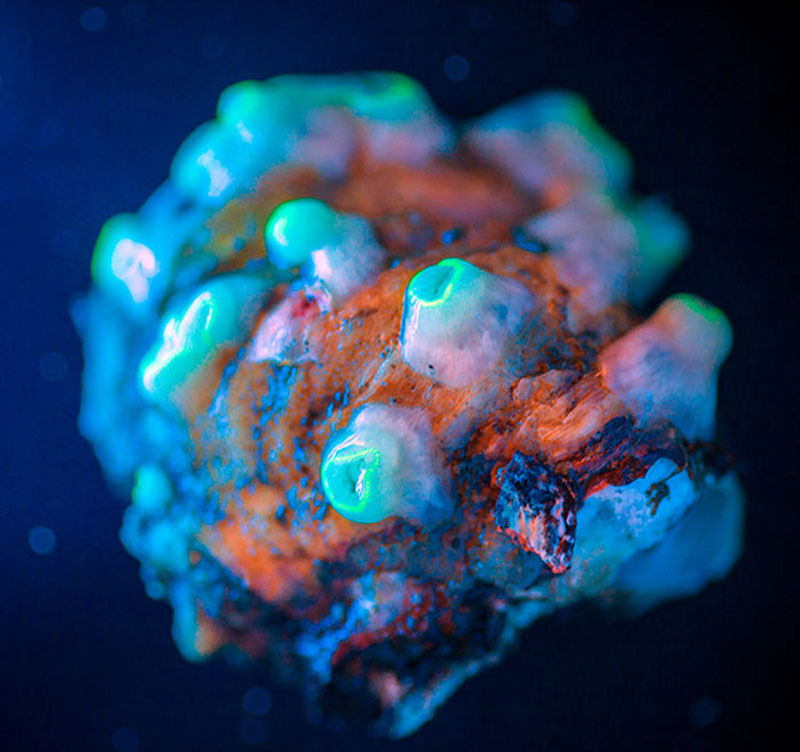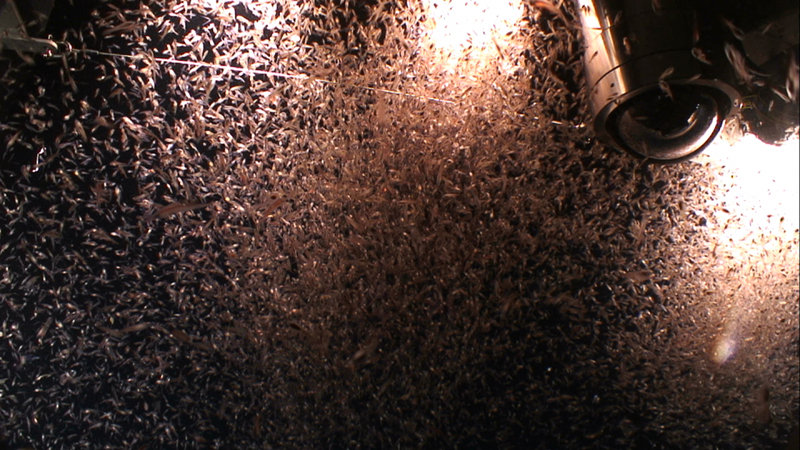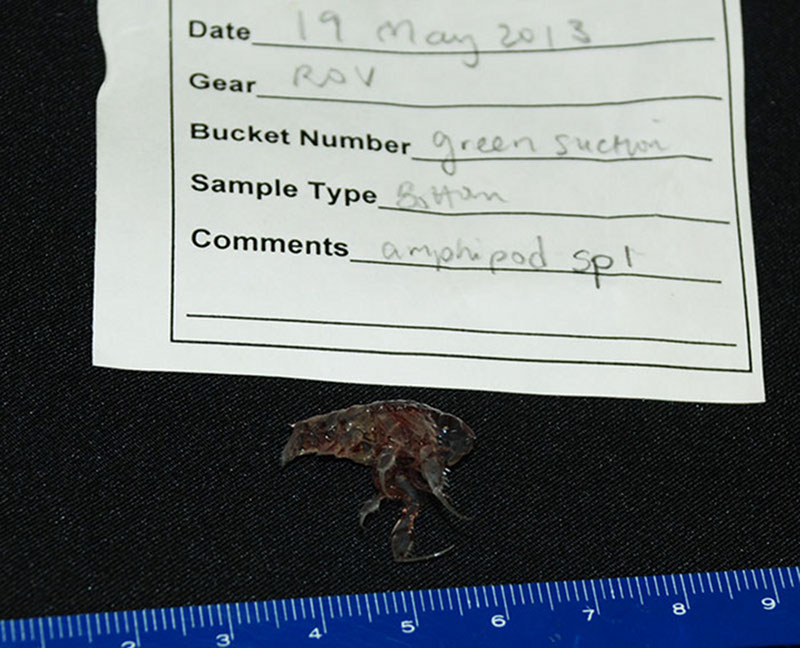
By Alanna Casey, Doctoral Candidate - University of Rhode Island
May 20, 2013

A Mola mola, or ocean sunfish, stops by for a visit during one of the dives of the Pathways to the Abyss cruise. Image courtesy of Deepwater Canyons 2013 - Pathways to the Abyss, NOAA-OER/BOEM/USGS. Download larger version (jpg, 2.9 MB).
Today, the Jason remotely operated vehicle (ROV) was taking core samples in the soft sediment of the continental shelf, about 100 meters deep, when an ocean sunfish (Mola mola) swam past!

Sample of corallimorphs collected by ROV Jason photographed under a blacklight to demonstrate florescence. Image courtesy of Art Howard, Deepwater Canyons 2013 - Pathways to the Abyss, NOAA-OER/BOEM/USGS. Download larger version (jpg, 13.6 MB).
Although Mola mola are usually associated with warm surface waters due to their sunning behavior, they are a pelagic species and can dive hundreds of meters. Mola mola are the largest bony fish in the world. At their full adult size, sunfish can reach three meters in length and weigh up to 2,200 kilograms, or about 4,800 pounds.
Instead of a long sleek body more akin to that found in species of tuna and other large fish, the body of a sunfish does not narrow, but ends with a rudimentary caudal fin that is as wide as its body. Additionally, Mola mola have very a large dorsal, elongated anal fin and small pectoral fins.

Similar to what was experienced by ROV Jason, remote exploration is made difficult for NOAA Ship Okeanos Explorer's new ROV as its lights and cameras are swarmed by shrimp, obscuring the view of scientists and ROV pilots. Image courtesy of NOAA Okeanos Explorer Program, Expedition 1302- ROV Shakedown. Download larger version (jpg, 1.4 MB).
Mola mola have a specialized mouth and mucus-lined esophagus that allows them to prey on jellyfish and other gelatinous zooplankton without negative effects from nematocysts or stinging cells. Sunfish have thick, leathery skin that is typically brown and white in color. They frequent tropical and temperate waters around the globe.
Despite some fishing pressures, Mola mola are not endangered yet, in part because they are one of the most fecund species of bony fish, with mature females producing 300 million eggs during each breeding period. Mola mola are a charismatic species and divers visit particular marine parks for the opportunity to swim alongside these giant fish.
When the Mola mola appeared on ROV Jason's screen, everyone in the ROV control van fell silent in order to watch the sunfish.

Amphipods like this were attracted to the lights on the ROV Jason which made sampling difficult. The "Pink Cloud" arrived around 8:00 pm on every dive of the second leg of the Deepwater Canyons expedition. Image courtesy of Deepwater Canyons 2013 - Pathways to the Abyss, NOAA-OER/BOEM/USGS. Download larger version (jpg, 1.5 MB).
In addition to the Mola mola, we have encountered other surprise species on our dives. Around 8:00 pm local time, small pink animals often appear in the water column. Eventually, they are so numerous around the cameras and lights of the ROV Jason that it becomes difficult to see. The majority of these swimmers are amphipods, and on the ship they are known as "the pink cloud."
Through this haze of amphipods, the ROV Jason’s pilots have to work carefully to keep their navigation on track, take sediment cores, and perform other scientific tasks. Sometimes we were able to complete a dive before the amphipods would appear, but on most days, the science and ROV teams had to deal with these unexpected visitors.